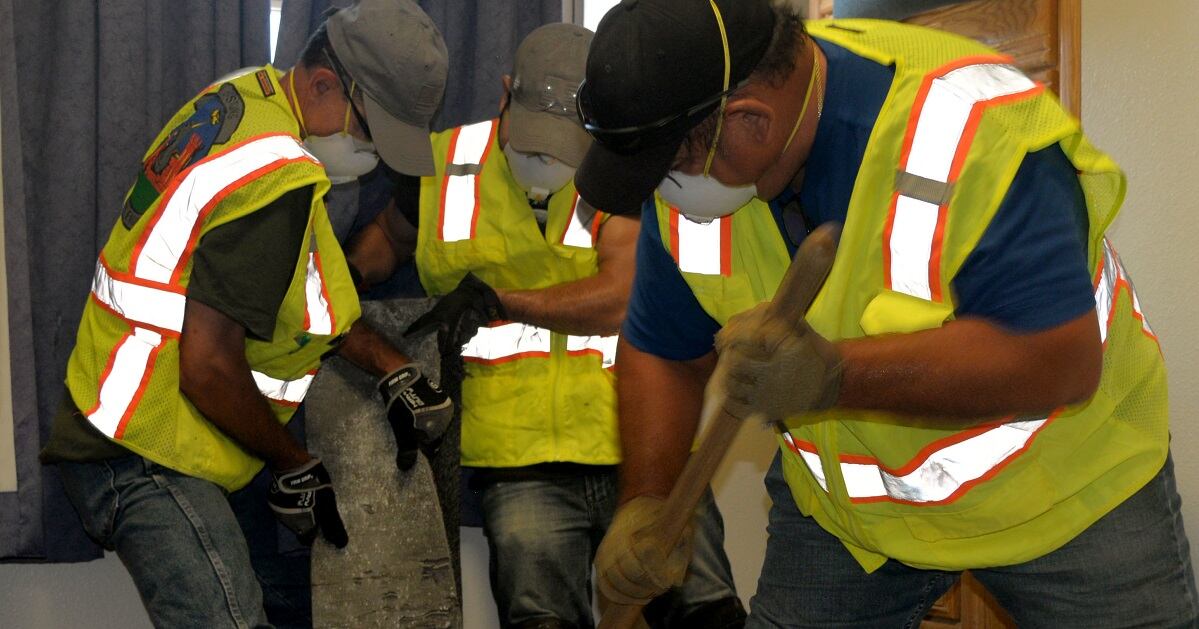The Air Force has finished removing the rampant mold that was infesting some dormitories at Joint Base San Antonio-Lackland.
But the mold problem never should have gotten to the point where it took a social media storm and the ensuing outrage to fix it, Lt. Gen. Brad Webb, the head of Air Education and Training Command, told reporters Tuesday at the Air Force Association’s Air Space Cyber conference in National Harbor, Maryland.
“We owe our airmen better than what we saw there on social media,” Webb said. “We owe them a safe and squared-away environment to work in. And that’s really the big lesson learned for us in this experience.”
In July, Lackland officials temporarily moved hundreds of residents of its permanent party and technical training dorms after photographs of moldy dorms hit social media and prompted an outcry among airmen. Some photographs showed mold on a pillow, a box spring, a uniform sleeve, boots and a video game controller.
RELATED

In an email, AETC spokesman Dan Hawkins said that as of Aug. 10, about 2,500 rooms across Joint Base San Antonio — about 30 percent of the base’s 8,000 or so rooms — had at least some mold. All of those rooms have now been professionally treated and cleaned, Hawkins said.
Joint Base San Antonio is also building a new dorm, in addition to ongoing renovations, and has plans to build six more new dorms and dining facilities across the base, Hawkins said.
The base has asked for $102 million through fiscal 2021 for 47 facility projects there as part of the 502nd Air Base Wing’s dorm and campus improvement plan, he said. Webb said long-term investment is needed to improve the base’s living facilities.
Webb told reporters that several factors combined to result in the dismal conditions at Lackland earlier this year. The dorms are older and house many airmen regularly coming through the basic military training pipeline, he said, and heat and humidity levels in central Texas this spring and early summer created conditions ripe for mold to grow.
But AETC also has to take a hard look at itself and how it manages these older facilities, and ask whether some need to be replaced, Webb said.
Design flaws and overpopulated dorms also contributed to the mold conditions, AETC Command Chief Master Sgt. Juliet Gudgel told reporters. Some rooms have twice as many airmen living there as they were built for, she said.
Some buildings also have aging heating, ventilation and air conditioning systems, Gudgel said. For example, the photographs that blew up online were of a permanent party dorm where the air handler had gone out. Making things worse, that dorm’s design flaws meant that in many cases, there was no fresh air coming through the room; airflow dumped out in a closet where it had nowhere to go. So, as heat and humidity rose, that stale, damp air led to rampant mold growth in those closets.
AETC bases also have to have the expertise to take care of such mold problems as soon as they arise, Gudgel said. If an airman spots mold or mildew problems beginning, she said, a military training leader needs to be able to call civil engineering to evaluate the problem, move the airman out if necessary, and fix the mold situation before it snowballs into something worse.
The Air Force has been pushing to try to fix problems with aging, inadequate infrastructure and living quarters, Gudgel said, and AETC needs to continue working with other major commands to improve airmen’s quality of life.
“We need to have safe — not only living, but also eating and working — conditions for our airmen,” she said. “As we look at our dormitories, we’re looking at infrastructure across our Air Force. ... This has helped us bring to light the issues we’re having across the Air Force.”
Stephen Losey is the air warfare reporter for Defense News. He previously covered leadership and personnel issues at Air Force Times, and the Pentagon, special operations and air warfare at Military.com. He has traveled to the Middle East to cover U.S. Air Force operations.





